The evolution of combat helicopters and their weapons: before and after the NWO
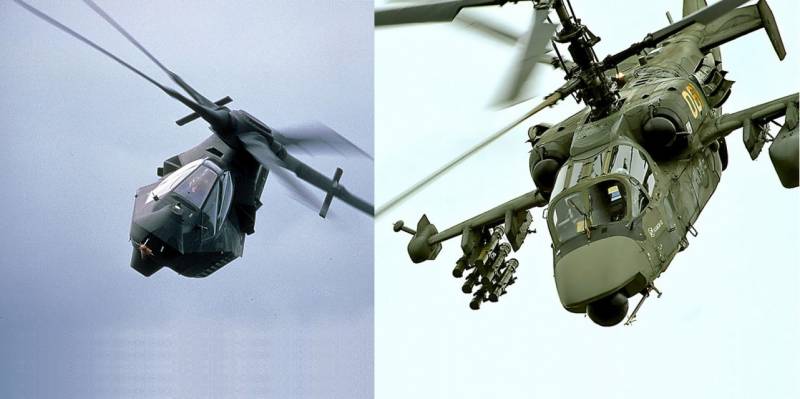
In the material "Combat helicopters - the basis for countering the breakthroughs of enemy armored units in the NVO zone" we examined how the designs of combat helicopters developed and what tasks they were intended to solve.
The last months of the Russian Special Military Operation (SVO) in Ukraine have shown what a huge role these vehicles play in deterring breakthroughs of enemy armored vehicles. With proper application, without "cavalry" attacks using unguided aviation missiles (NAR), and working on armored vehicles using anti-tank guided missiles (ATGM), combat helicopters show the highest level of survivability.
Nevertheless, already several decades ago, the developers of combat helicopters understood that their vulnerability to air defense (AD) fire would gradually increase, so the designs of promising combat helicopters and concepts for their use began to be prepared in the leading countries of the world.
At the end of the 28th century in the USSR, and then in Russia, there were serious problems with financing, so there was no time for the future - with great difficulty, the industry managed to save and bring to serial production the Mi-50 and Ka-52 combat helicopters (in the form of its " heir" Ka-XNUMX).
At the same time, overseas in the United States, the program of the advanced reconnaissance and attack combat helicopter RAH-66 Сomanche ("Comanche"), which was supposed to become a new word in helicopter engineering, was actively conducted.
RAH-66 Comanche
The RAH-66 Comanche, developed by a consortium of Boeing and Sikorsky, was supposed to be the first "invisible" helicopter, that is, a machine made with the widespread use of stealth technology, which was super popular at that time (stealth). The first prototype was presented in 1991, it was planned that the armed forces (AF) of the United States would purchase 4-000 RAH-6 Comanches.

RAH-66 Comanche prototypes
Significant efforts by designers were made to reduce visibility in the radar, thermal and acoustic ranges - the effective dispersion surface (ESR) of the RAH-66 helicopter in the radar wavelength range should have been lower than that of the AGM-114 Hellfire ATGM, and 350 times lower, than the AH-64 Apache helicopter. An inconspicuous body with fully retractable weapons (including a cannon) was supposed to provide the Comanche with the advantage of a “first shot” when meeting with enemy anti-aircraft missile systems (SAMs).
In addition to stealth, the RAH-66 Comanche was equipped with the latest reconnaissance equipment and cockpits with augmented reality helmets that implement the concept of "eyes outside the cockpit", in general, at that time this car seemed weapons from some fantasy movie.
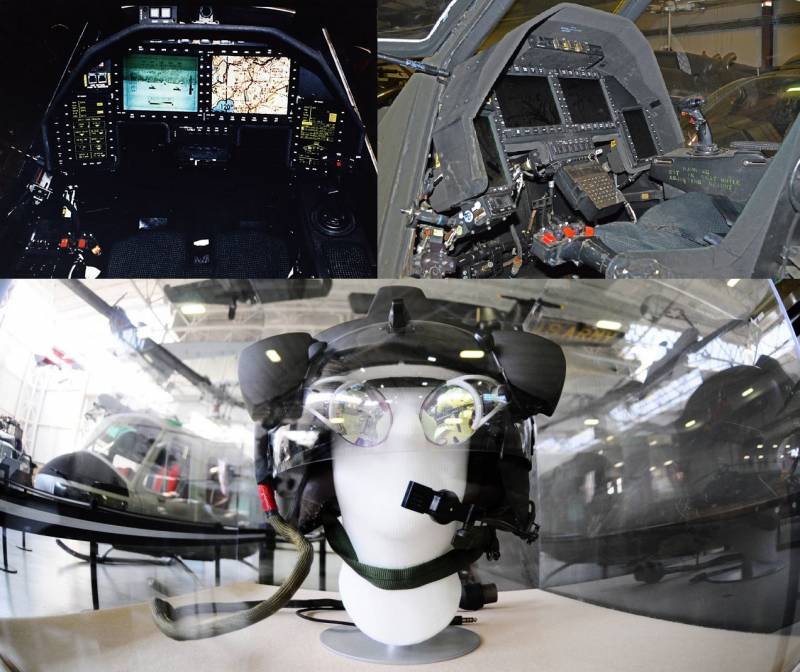
Cockpit and helmet pilots RAH-66 "Comanche"
At the same time, the RAH-66 Comanche had practically no armor protection, so its use for fire support of ground forces was completely excluded.
The collapse of the USSR put an end to the program for the creation and purchase of the RAH-66 Comanche, hordes of Soviet armored "hordes" went to be melted down, surprises from the former US empire were no longer expected, and the Comanche was not intended for the war with bearded terrorists and cost too much. expensive.
In Russia, it is often customary to make fun of the closed programs for the development and production of weapons of our opponents - they say, "this is a cut, stupid Americans have wasted their money."
However, this is far from being the case - such programs provide a huge reserve for the future, which can be used both to modernize existing equipment and to develop promising products. On the contrary, to realize in time that the time for a particular combat vehicle has not yet come, not to drive “raw” equipment into the troops is a sign of the “maturity” of the command of the US Armed Forces.
How could the RAH-66 Comanche show itself in the NWO zone?
Of course, if you use this car as an attack aircraft, then it would be quickly dismantled “for spare parts”. But in scenarios where it would be used competently, everything is different.
If the Armed Forces of Ukraine (AFU) had RAH-66, Russian troops would get a serious headache - even ordinary Soviet-made helicopters of the AFU are trying to operate on the battlefield, even if they are shot down, but not always. And what would happen if we were faced with inconspicuous machines?
At night, using their highly effective reconnaissance capabilities, they could inflict serious damage on Russian tanks, artillery, multiple launch rocket systems (MLRS) and other equipment, to carry out raids in the rear of the RF Armed Forces.
In the daytime, the RAH-66 Comanches could counter the Ka-52 and Mi-28 combat helicopters, covering the actions of the armored vehicles of the Armed Forces of Ukraine, and stealth would increase the chances of their survival in the conditions of Russian aviation dominance near the front line.
However, as it is, it is - the RAH-66 Comanche stealth combat helicopters never made it to the battlefields, so the developers began to look for other ways to increase the survivability of rotorcraft.
Survival through weapons
The creators of combat helicopters have found a solution to the problem of increasing the survivability of combat helicopters in confrontation with enemy air defense systems by introducing new types of weapons into the ammunition load of combat helicopters. There are several possible directions for development.
The first is an increase in the range and flight speed of ATGMs. For example, Russian Ka-52 helicopters are equipped with the second-generation Vikhr supersonic ATGM, guided along the “laser path”, with a flight range of up to 8 kilometers and a flight speed of up to 600 meters per second. The problem is that it is quite difficult to compete with air defense systems in this matter, since missiles also have an impressive range and flight speed.
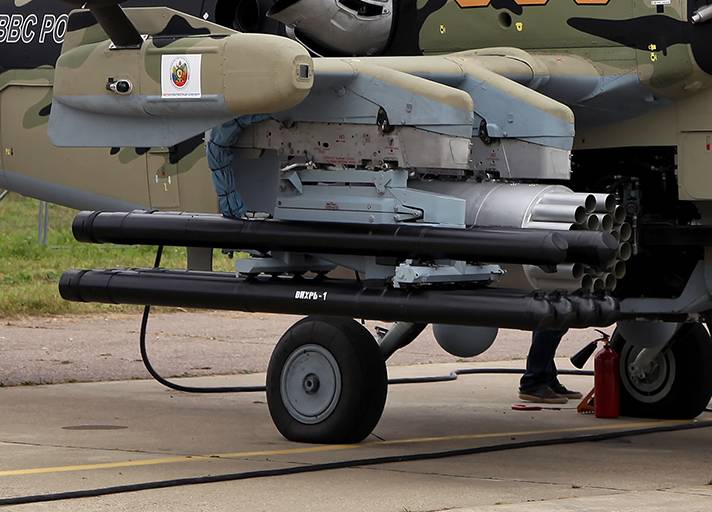
ATGM "Whirlwind" under the wing of a Ka-52 helicopter
The second direction is the use of ATGMs operating on the principle of "fire and forget", which belong to the third generation. Western designers have chosen this path. The use of such ATGMs allows the combat helicopter to emerge from behind cover (buildings, trees, hills, etc.) only for a short moment, capture the target, launch the ATGM, and then the combat helicopter can again hide in the terrain.
The problem is that such ATGMs are much more expensive, since they must include an optical infrared / multispectral and / or active radar homing head (IR seeker / ARL seeker). In addition, it is easier for jamming devices or smoke screens to divert an ATGM with a seeker from the target than to confuse the guidance system of a combat helicopter controlled by the pilot.
There are ATGMs of the following - conditional fourth, fifth, sixth generations (there is no general classification, now the concept of "generation" has become a marketing term), having a feedback channel with the operator, who receives an image from the homing head and can correct the point of impact or even redirect the ATGM in flight.
However, the feedback channel is potentially affected by electronic warfare (EW) - the exception is control over a fiber-optic communication line, but it limits the firing range of ATGMs and is poorly suited for helicopters.
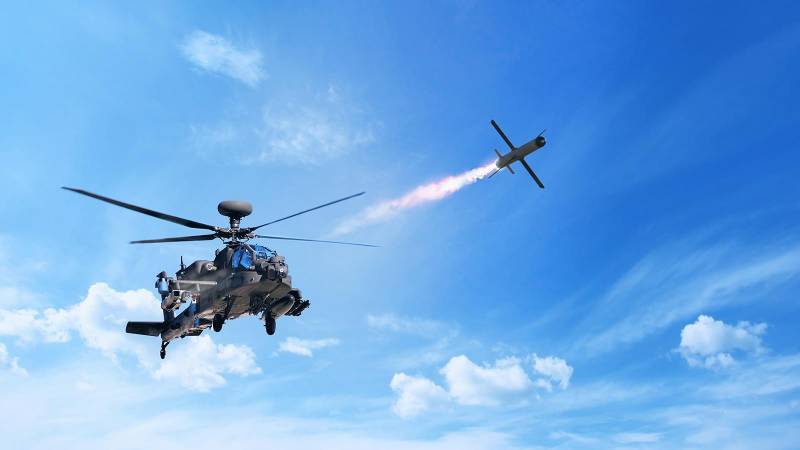
Israeli ATGM NLOS (Non Line Of Sight - out of sight), launched from a combat helicopter AH-64D
Analysis of the development of defense technologies in the foreseeable future suggests that ATGMs with GOS may become vulnerable to promising self-defense systemsmade on the basis high power lasers.
The solution to the problem may be the emergence of hypersonic ATGMs https://topwar.ru/173607-perspektivy-razvitija-ptur-giperzvuk-ili-samonavedenie.html, capable of hitting enemy armored vehicles protected by active protection systems (KAZ) and dynamic protection (DZ), a direct hit by a kinetic warhead - essentially the equivalent of a tank armor-piercing feathered sub-caliber projectile (BOPS).
So far, even combat helicopters with second-generation ATGMs, with proper use, shoot down the equipment of the Armed Forces of Ukraine with virtually impunity. However, everything can change when Western countries decide to supply more modern air defense systems. Or we will face them directly in future conflicts.
It can be assumed that the optimal solution would be a combination of ATGMs of various types. For example, a combat helicopter can carry a pair of hypersonic ATGMs to suppress advanced laser air defense systems, a pair of ATGMs with a seeker designed to suppress air defense systems, as well as half a dozen conventional, relatively inexpensive supersonic ATGMs, guided along a “laser trail”, to destroy enemy armored vehicles that have lost their cover .
Leading and led
One of the possible ways to increase the security of combat helicopters was the concept of their joint use with unmanned aerial vehicles (UAVs). In particular, this possibility has already been implemented on the extreme modification of the American combat helicopter AH-64E Apache Guardian.
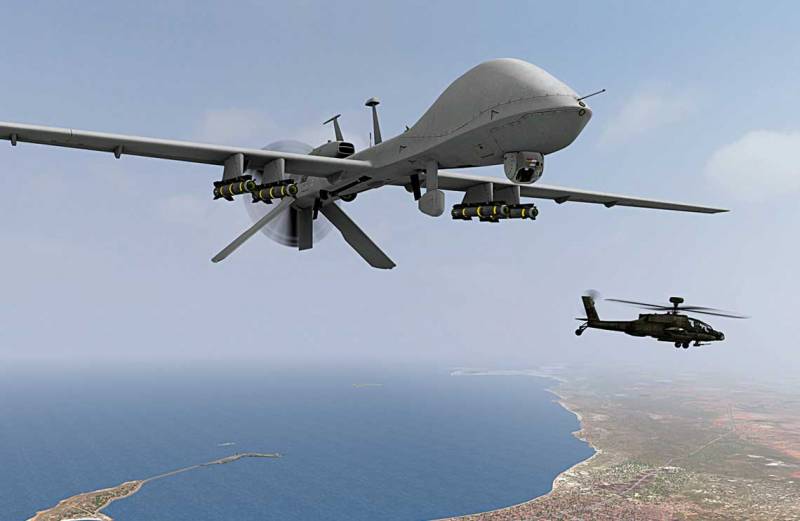
AH-64E Apache Guardian and MQ-1C Gray Eagle UAV
How effective and justified is it?
The question is open - if we are talking about medium-sized reconnaissance and strike UAVs of the MQ-1C Gray Eagle type, and we have a high-quality communication system via satellite, then a helicopter is clearly superfluous in this scheme.
Provide the pilot and operator of a combat helicopter with the opportunity to receive intelligence data from the UAV? Yes - it won't hurt. But to manage it? Why distract the operator of a combat helicopter from his work, when it is easier and more efficient to do it from a control center located safely in the rear, thousands of kilometers from the battlefield?
On the other hand, in autonomous missions, escort in the form of a reconnaissance UAV for a combat helicopter may well come in handy, for example, push it forward, provoke the enemy to open fire, identify targets that have unmasked themselves and destroy them with airborne weapons fire.
The fighting in the NVO zone does not indicate a clear need for UAV control from a helicopter, however, it can be assumed that a small reconnaissance UAV operating in conjunction with a combat helicopter would not only allow faster identification of targets, but also confirm their defeat in order to there were no disputes, such as whether the tank was hit, or the tractor.
Active protection
One of the most effective solutions that increase the survivability of combat helicopters on the battlefield was the L-370 Vitebsk airborne defense systems.
The L-370 "Vitebsk" complex automatically detects the launch of enemy missiles using laser irradiation detection equipment and ultraviolet direction finders, after which the optoelectronic suppression station (SOEP) is activated, operating in the infrared and radio ranges, as well as devices for emitting passive interference - false thermal targets and chaff.
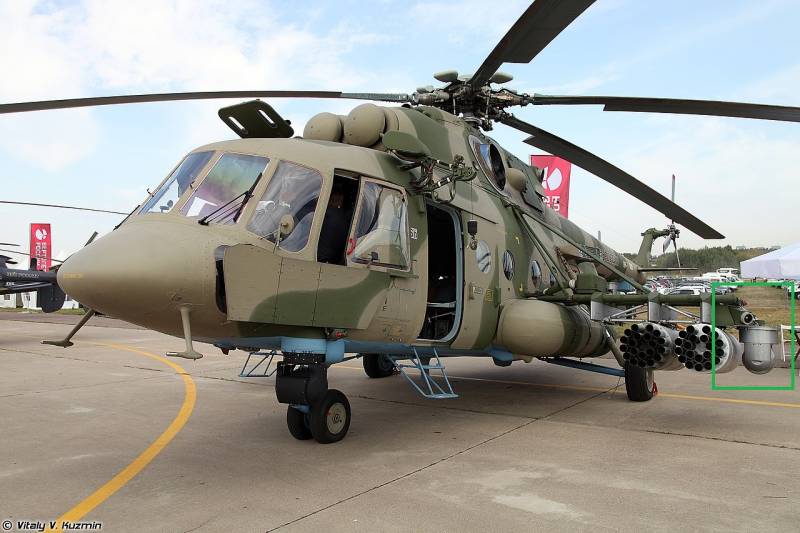
L-370 "Vitebsk" on the Mi-8AMTSh transport and combat helicopter (one of the blocks is highlighted with a frame)
During the SVO, a remarkable record was set - the Ka-52 combat helicopter managed to repel the attack of 18 (!) SAMs with infrared seeker launched from Stinger man-portable air defense systems (MANPADS). The disadvantage of the existing airborne defense systems is the inability to withstand second-generation ATGMs, in which there is no homing head - some Russian combat helicopters in the NMD zone were destroyed precisely with their help.
It can be assumed that the successful use of airborne defense systems in the NMD zone will spur their further development and improvement not only in Russia, but also in other countries of the world.
With a high probability, it can be assumed that the experience gained in the NMD zone is already being used in the course of work on the modernization of the L-370 Vitebsk complexes and / or the development of new airborne defense systems based on them. The main thing is that it doesn’t work out, as with active protection systems (KAZ) of tanks - being developed in the USSR, they never went into large-scale production, as a result, in fact, only the Israeli Trophy KAZ is now fighting.
In the future, we can expect an expansion of the functionality of airborne defense systems by ensuring not only the withdrawal of attacking enemy ammunition, but also their functional suppression (disabling the seeker) or complete destruction. In particular, the United States is already integrating powerful laser weapons into the weapons system of the AH-64 helicopter. With a power of several tens of kW, it will already be able to shoot down missiles and anti-tank missiles, and when the planned power of 150 kW or more is reached, such a laser can also be used to destroy fairly large UAVs, as well as other unarmored ground and air targets.

Helicopter AH-64 with a powerful laser weapon on board
The appearance of combat helicopters on board cannot be ruled out. air-to-air interceptor capable of operating on air-to-air missiles and missiles.
Or, airborne self-defense systems can evolve into KAZ-AT - complexes of active protection of aviation equipment.
In general, it can be confidently assumed that increasing the survivability of combat helicopters will require the abandonment of the use of unguided munitions, the use of weapons of various types and purposes, including hypersonic ATGMs, ATGMs with homing heads and low-cost second-generation ATGMs. The mass saved by abandoning the use of NARs can be used to deploy advanced airborne defense systems, air-to-air missiles and advanced active defense systems for aviation equipment, which can significantly increase the survivability of combat helicopters on the battlefields of the near future.
Outside the brackets, there is such a direction in the development of combat helicopters as a significant increase in the speed of their flight - up to 400-500 kilometers per hour. However, according to the author, this direction is hardly of great importance precisely as a way to increase the survivability of rotary-winged vehicles, rather as a means of increasing mobility, speed of arrival in the area of combat missions.
Information